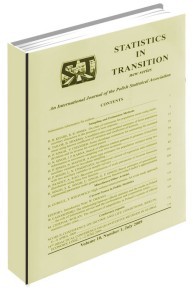DECOMPOSITION OF GENDER WAGE GAP IN POLAND USING COUNTERFACTUAL DISTRIBUTION WITH SAMPLE SELECTION
DECOMPOSITION OF GENDER WAGE GAP IN POLAND USING COUNTERFACTUAL DISTRIBUTION WITH SAMPLE SELECTION
Author(s): Joanna Małgorzata LandmesserSubject(s): Economy
Published by: Główny Urząd Statystyczny
Keywords: gender wage gap; sample selection; decomposition of income inequalities
Summary/Abstract: In the paper, we compare income distributions in Poland taking into account gender differences. The gender pay gap can only be partially explained by differences in men’s and women’s characteristics. The unexplained part of the gap is usually attributed to the wage discrimination. The objective of this study is to extend the Oaxaca-Blinder decomposition procedure to different quantile points along the income distribution. We use the RIF-regression method to describe differences between the incomes of men and women along the two distributions and to evaluate the strength of the influence of personal characteristics on the various parts of the income distributions. As the sample selection is a serious issue for the study, therefore our decomposition approach will be adjusted for sample selection problems. The results suggest not only differences in the income gap along the income distribution (in particular sticky floor and glass ceiling), but also differences in the contribution of selection effects to the pay gap at different quantiles. The analysis is based on data from the EU-SILC data for Poland in 2014.
Journal: Statistics in Transition. New Series
- Issue Year: 20/2019
- Issue No: 3
- Page Range: 171-186
- Page Count: 16
- Language: English

